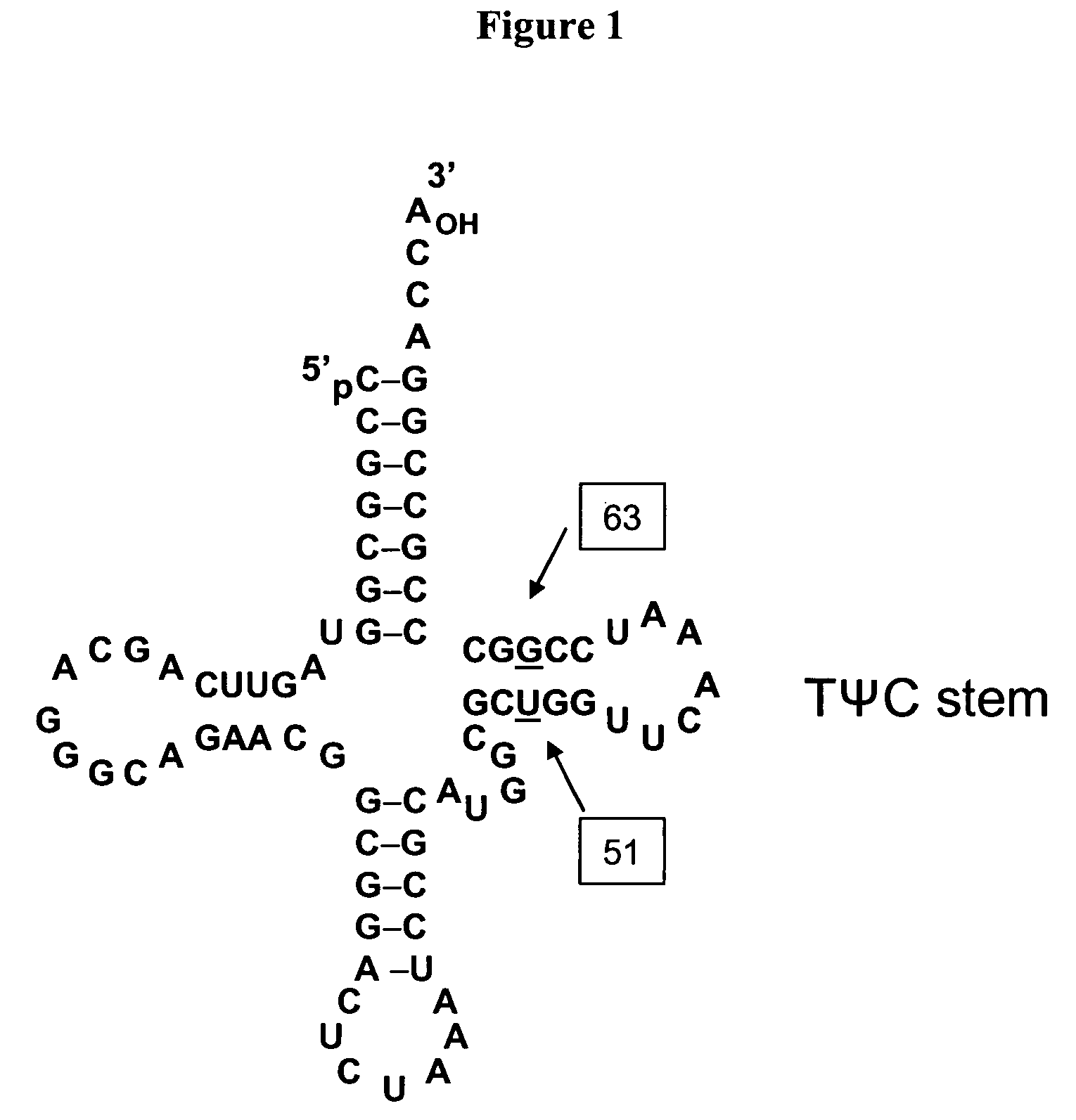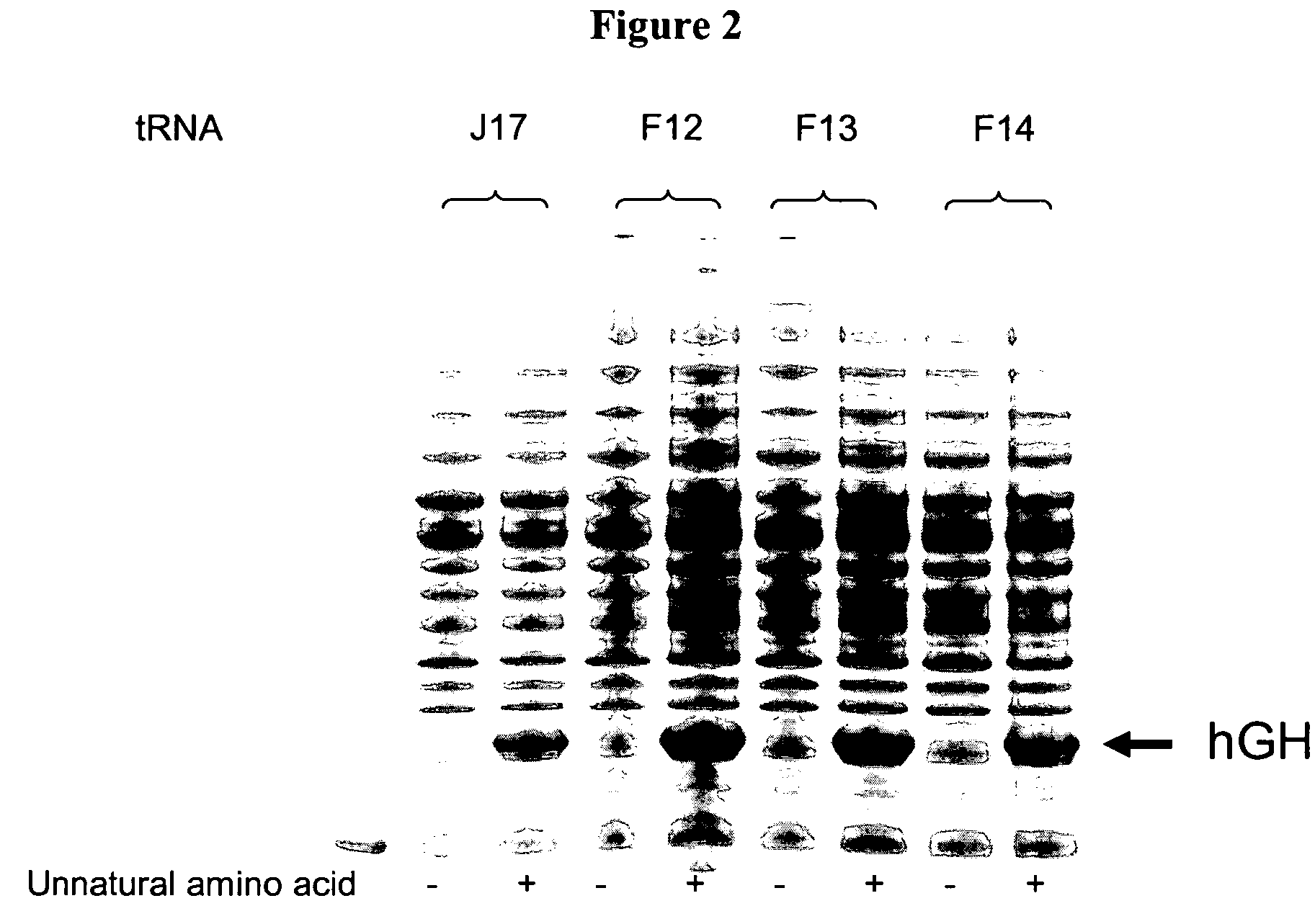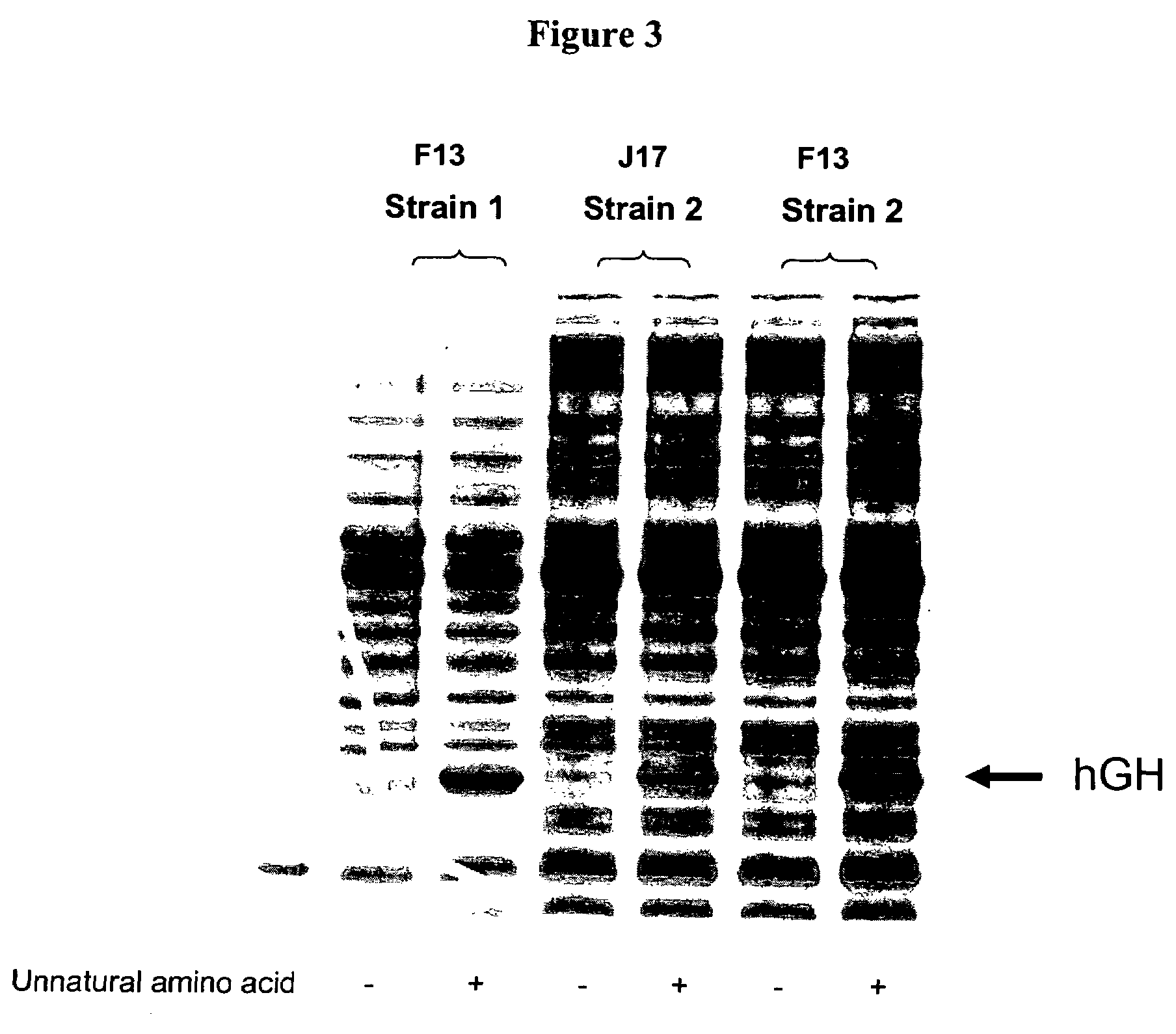Compositions of tRNA and uses thereof
a technology of trna and trna, applied in the field of translation biochemistry, can solve the problems of inability to rationally control protein structure and function, difficulty in removing the constraints imposed by the genetic code, and limited progress
- Summary
- Abstract
- Description
- Claims
- Application Information
AI Technical Summary
Benefits of technology
Problems solved by technology
Method used
Image
Examples
example 1
Aminoacyl-tRNA Synthetase Selection Against Para-Acetyl Phenylalanine
[0252]Two DNA libraries were screened for aminoacyl-tRNA synthetases against para-acetyl phenylalanine, a non-naturally encoded amino acid. These libraries consisted of six mutations in the tyrosyl tRNA synthetase gene from Methanococcous janneschii in the pBK plasmid.
[0253]The selection procedure was preformed which consisted of five alternating rounds of selection, three positive, two negative. The libraries were combined in a 1:1 ratio and electroporated into the positive selection cell line (GeneHog with positive selection plasmid, pREP) and plated on minimal media plates (GMML) with appropriate antibiotics and the non-naturally encoded amino acid para-acetyl phenylalanine (pAF). The plates were incubated at 37° C. for about 40 hours at which point the cells were harvested by scraping. The DNA was extracted using a Qiagen Mini-Prep procedure, and then was agarose gel purified to isolate the library plasmid DNA....
example 2
tRNA Mutagenesis
[0262]Three mutants were generated of tRNA J17. The DNA sequence of wild-type J17 is shown as SEQ ID NO: 8 and in U.S. Patent Publication Nos. 2003 / 0108885 as SEQ ID NO: 1 and US 2003 / 0082575 as SEQ ID NO: 1 (U.S. patent application Ser. Nos. 10 / 126,931 and 10 / 126,927, respectively), both of which are incorporated by reference herein. J17 tRNA has a U51:G63 wobble pair in the TψC stem as shown in FIG. 1.
[0263]Three J17 mutants (F12, F13, and F14) were generated to produce Watson-Crick base pairs at positions 51 and 63 of the TψC stem. Mutagenesis was performed by overlapping PCR, and the final constructs were cloned into EcoRI and NdeI sites in a pET19 plasmid comprising the polynucleotide sequence encoding the aminoacyl tRNA synthetase E9 (SEQ ID NO: 4) and the polynucleotide sequence encoding human growth hormone (hGH) with an amber codon substitution (SEQ ID NO: 16). The expression of hGH was under the control of the T7 promoter.
[0264]Two fragments were generated ...
PUM
| Property | Measurement | Unit |
|---|---|---|
| pH | aaaaa | aaaaa |
| pH | aaaaa | aaaaa |
| Tm | aaaaa | aaaaa |
Abstract
Description
Claims
Application Information
 Login to View More
Login to View More - R&D
- Intellectual Property
- Life Sciences
- Materials
- Tech Scout
- Unparalleled Data Quality
- Higher Quality Content
- 60% Fewer Hallucinations
Browse by: Latest US Patents, China's latest patents, Technical Efficacy Thesaurus, Application Domain, Technology Topic, Popular Technical Reports.
© 2025 PatSnap. All rights reserved.Legal|Privacy policy|Modern Slavery Act Transparency Statement|Sitemap|About US| Contact US: help@patsnap.com



